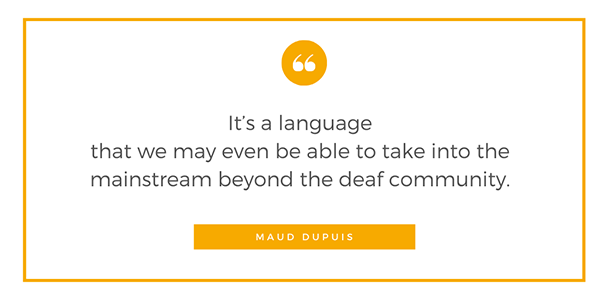MAUD DUPUIS’ INTERVIEW
Check out our video of the week featuring Maud Dupuis, Founder of Polymorphe Design. She explains what place does sign language have in our society today.

About twenty years ago, sign language existed but it wasn’t official until 2005. In other words, in 2005, sign language became an officially-recognized French sign language, with research on linguistics and university research that structured professions around French sign language.
Until then, we could have, for example, for the city of Marseille, we would have the “Marseille” sign from the people of Marseille and the people of Lille would sign “Marseille” with another sign.
Having a national language means that we’ll have the same signs for the whole territory. This is important. It’s a little bit like making an official dictionary. At the moment, we don’t have a complete, exhaustive sign language dictionary. We still have words being created, vocabulary being created and it’s making sign language official that will enable this.
We estimate that there are about 100,000 speakers of French sign language today, so we are a real community that is more and more inclusive in everyday life. Therefore, for me, it’s a language that’s bound to expand, to spread more and more and has a lot of future in the sense that we are at the beginning of a language. We even see it in the mainstream, for example, as a language that’s taught to toddlers.
Toddlers are better able to communicate in sign language and they communicate in sign language to share real messages: desires, needs and feelings even before they can verbalize them. It’s a language that we may even be able to take into the mainstream beyond the deaf community.
Looking for the right partner for your multilingual projects? We’re here to help!